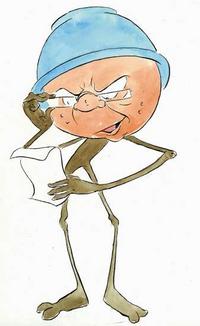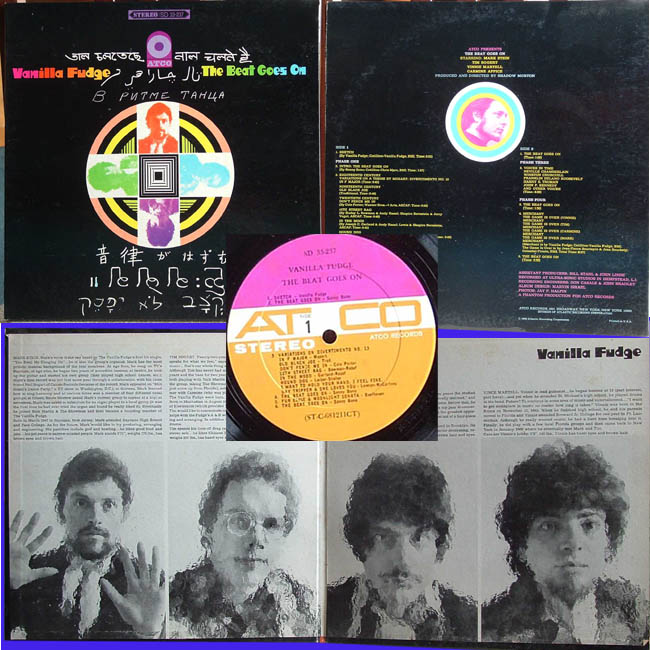You know what? This sucks. But I wanted it to suck more. I wanted him to sing this in the “Red-Hooded Sweat Shirt” voice.
I know that there are plenty of arguments as to why we could never isolate one single song as the first rock and roll song ever. And those arguments are more than welcome…if and only if they lead us to identifying the song.
It was in revisiting the American Graffiti soundtrack (thanks to mikeydread’s first Main Stage post) that got me thinking about this again. The common wisdom when the movie came out, at least as relayed to me by my father, was that Bill Haley & The Comets‘ Rock Around the Clock was the first rock and roll song ever.
What makes a decent compilation album? By which I mean, a collection of tunes that is, well, more than just a collection of tunes. I have recently been reviewing Dark is the Night, the latest of the Red Hot Organization’s fund-raising records. It’s a who’s who of the young, gifted, and groovy, including Bon Iver, Stuart Murdoch, Feist, Cat Power, Arcade Fire, My Morning Jacket, and more. It’s a magic pudding of an album, a cut-and-come-again collection. I am enjoying its parts but does it represent anything more? Is that what good, even great, compilations do? Or am I just looking at the moon through a keyhole?


By compilations I mean collections of more than one artist or band.
I tread warily around reggae compilations from Studio One. When does a collection of rare “classics” become the scraping of the barrel? I am rarely curious enough or cashed up enough to fund out. And I run screaming from most tribute albums. Gram Parsons, The Smiths, The Go-Betweens, Serge Gainsbourg…I’m outta here. When is the whole greater than the sum of the parts, grasshopper?
I have fond memories of the early Hal Wilner sorties Lost in the Stars (a collection of songs by Bertolt Brecht and Kurt Weil, and Stay Awake, the music from Disney films. Highlights here include Los Lobos’ “I Wanna Be Just Like You” (from the Jungle Book) and Bonnie Raitt, who I otherwise don’t go out of my way for caressing “Baby Mine” (from Dumbo) into exquisite moods. The take out from these two records is that I come away with a greater appreciation of the idea being compiled. There may be one or two stinkers in there too, but I’m prepared to forgive in the name of eclecticism. There’s a Martin Hannett anthology, Zero, that is an interesting tour of post-punk (Buzzcocks, Joy Division, Kitchens of Distinction) that I am not ashamed to own.
What compilations have lasted longer than a fake tan?
This video is appalling on multiple levels.
[livevideo]278CE95C3DCC48C3A209934D701A60D5[/livevideo]
The pointlessly rural setting, the various Look crimes – the beret, the overalls, the visor, the aviator shades, the peroxide – the objectification of women’s body parts, the exploitation of poor people, Rod’s preening and prancing… I could go on.
This style of Stonesy rock is what Rod had been successfully purveying with the Faces, but here it’s been perfected to death. It’s now drained of whatever vitality it once had and turned into a coked-out rock star nightmare. I hate everything about it.
But.
I absolutely LOVE that guitar riff that comes in after Rod shrieks “I love ya, honay!” (first appearance at about 1:23). A two-chord riff with one repeat, it’s perfect in its simplicity, even it is a bit too Les-Paul-through-a-Marshall-amp. It just works.
Of course it’s immediately undercut by that dull, thudding drum fill from whichever Appice brother that is, but this little hint that Rod still knows what he’s doing confuses me. Does it almost redeem the song, or does it make the whole thing even more embarrassing by highlighting all that he’s thrown away?
Anyway, do you have a song or an album you basically despise which still has some feature or aspect you grudgingly love?
I have to apologize to anyone expecting a Rock Town Hall GRAMMYS Bash tonight. I’ve been so busy preparing for our upcoming Foyer of Fame festivities that I didn’t even realize the GRAMMY folks were doing their thing until I saw the paper this morning. Then I didn’t care about it. I tuned in briefly, earlier tonight, to see that American Idol woman, Jennifer Hudson, whose family was recently slain – a sincerely horrible thing that even I felt sad about. I only caught the tail end of her performance, that point when the African American Robed Choir suddenly appeared to make sure you really felt her pain. My timing was a message from god.
I also saw that “I Kissed a Girl” woman, Katie Perry? I’d never heard that entire song. Man, it sucks. It’s the cross-section between Pat Benetar and the worst aspects of The Cure.
Just now I tuned in again to see Kanye West, M.I.A., Lil’ Wayne, Jay-Z (I think), and maybe some other guy all yell at once while a token white guy played a heavy rock guitar lick in the background. Ugh.
Then Paul McCartney came on – still sans Hamish Stuart – to play yet another lame version of “I Saw Her Standing There.” Give it up, already, Paul! And Coldplay, after tonight’s festivities can you give up wearing those Sgt. Pepper’s jackets? It’s been 2 years appearing in public in those things, no? They smell.
As discussed in my kick-off piece for Exploitive Black Rock History Month, some subjects we’ll be exploring will be more difficult to assess than the African American robed choir (AARC). The practice of white rock bands incorporating “authentic” bluesmen is not as black and white as the AARC, and with no one else taking on the task, it’s our job to review the shades of gray.
A scant 21 seconds into the following YouTube clip of an interview with Jefferson Airplane/Hot Tuna guitarist Jorma Kaukonen, Jorma sets up what I’m about to discuss in today’s examination of exploitive black rock history better than I could have hoped. Check it out.
Long before Jon Spencer Blues Explosion found R.L. Burnside, possibly the last surviving African American bluesman with any pre-rock-era credibility to drag around on tour and dazzle white middle audiences, Jefferson Airplane and offshoot band Hot Tuna turned white rockin’ America onto Papa John Creach.
Continue reading »


“When the crescendo comes up during a song, I lose myself in it. I feel I’m making love to the audience. The sound fondles them, taunts them. grabs at them, embraces them.” — Vanilla Fudge keyboardist Mark Stein, from the liner notes to the Fudge’s 1968 concept album The Beat Goes On
Fellow Townspeople — I went out on a particularly fruitless thrifting expedition today; so fruitless, in fact, that I had to resort to buying an album solely because it looked like the single most colossally pretentious turd ever unleashed on the record buying public. And it was! This Vanilla Fudge album — The Beat Goes On, from 1968 — is astonishing in its badness, even for a Vanilla Fudge LP. Its awfulness is almost surreal. It may in fact be the worst album I’ve ever heard.
The basic idea, if there really is one, involves slowing down the Sonny Bono song from the title to a dirge-like pace, splitting it into six pieces, and filling groove space between these 6-minute-long snippets with brief, partial covers of music by artists ranging from Mozart to The Beatles — interspersed with pompous, idiotic interview segments with band members and lengthy audio montages of famous speeches by politicians from the 20th century, and the occasional sitar raga. Yes, I’m serious.
I’m sure you’re eager to hear some of this. I’m afraid I cannot indulge your macabre curiosity. If I were to rip and post this album here, I might be responsible for single-handedly upsetting the fundamental, universal balance between musical good and evil, and unleashing armies of winged demons wearing Bad Company T-shirts upon the world. The gates of hell would burst asunder, and with a giant retching sound, the rock netherworld would give up its glassy-eyed, greasy-haired, bongwater-soaked rock undead to assault and terrorize the planet. It’s just not worth it.
Sorry, guys. Trust me, I’ve got your best interests at heart here.
Your friend,
HVB

